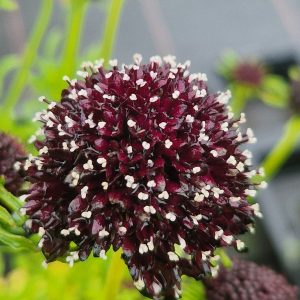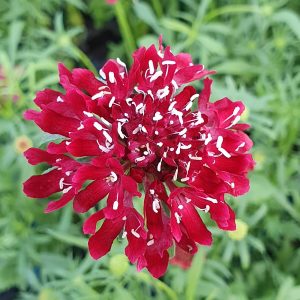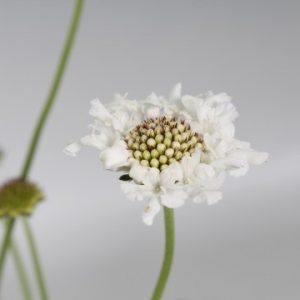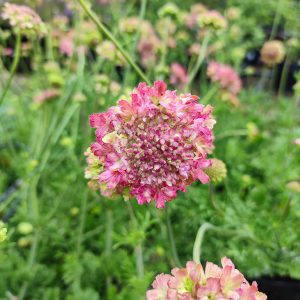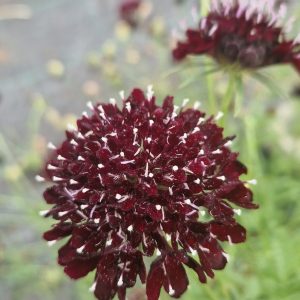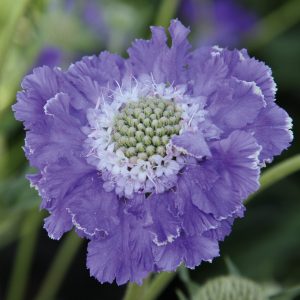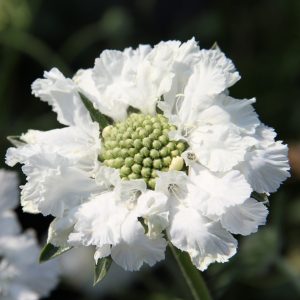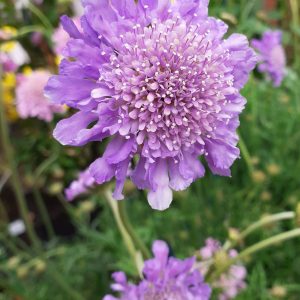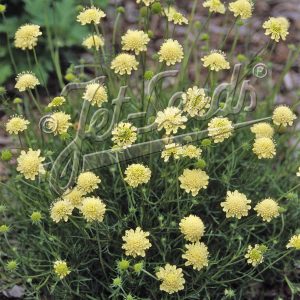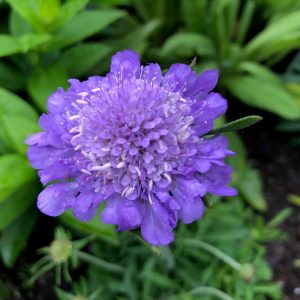Scabiosa, commonly known as pincushion flower, is a delightful perennial known for its unique and attractive blooms. Follow this planting guide to ensure the successful establishment and long-term health of your Scabiosa plants.
Choose the Right Location
Sun Exposure: Plant Scabiosa in a location with full sun to partial shade. They thrive in well-lit areas, receiving at least 6 hours of sunlight daily.
Soil Preparation:
Well-Draining Soil: Scabiosa prefers well-draining soil. Incorporate organic matter like compost to improve soil structure.
pH Level: Aim for a slightly acidic to neutral pH level, around 6.0 to 7.5.
Planting Time
Spring or Autumn: Plant Scabiosa in the spring or autumn for optimal establishment. Avoid extreme weather conditions.
Spacing
Allow Adequate Space: Space plants 12 to 18 inches apart to provide sufficient air circulation and prevent overcrowding.
Planting Depth
Proper Depth: Plant Scabiosa at the same depth as they were in the nursery containers. Ensure the crown is at soil level.
Watering
Regular Moisture: Keep the soil consistently moist during the growing season. Water deeply when the top inch of soil feels dry.
Avoid Waterlogged Soil: Ensure good drainage to prevent waterlogging, as Scabiosa plants are susceptible to root rot.
Mulching
Apply Mulch: Mulch around the base of the plants to retain soil moisture, suppress weeds, and regulate soil temperature.
Fertilisation
Balanced Fertiliser: Use a balanced, slow-release fertiliser in the spring. Avoid excessive nitrogen to prevent excessive foliage growth at the expense of flowers.
Support for Tall Varieties
Staking: Provide support, such as stakes or cages, for taller Scabiosa varieties to prevent them from flopping over.
Deadheading
Regular Deadheading: Remove spent flowers to encourage continuous blooming. This also helps maintain a neat appearance and redirects energy to new blooms.
Pest and Disease Management
Monitor for Pests: Keep an eye out for pests like aphids and spider mites. Treat promptly with insecticidal soap if needed.
Good Air Circulation: Ensure proper spacing and good air circulation to minimise the risk of fungal diseases.
Winter Care
Mulching in Winter: Apply a layer of mulch in late autumn to protect the plants from extreme cold and temperature fluctuations.
Pruning
Cut Back in Late Autumn: Trim back the plants in late autumn to remove dead or damaged growth. This also helps rejuvenate the plant for the next growing season.
Division
Every Few Years: Divide clumps every few years to maintain plant vigour. This is best done in the spring.
Enjoy the Blooms
Cut Flowers for Bouquets: Scabiosa flowers make excellent cut flowers for bouquets. Enjoy the beauty of their unique, pincushion-like blooms indoors as well.
By following these guidelines, you can establish and maintain healthy Scabiosa plants that will reward you with beautiful blooms throughout the growing season.



